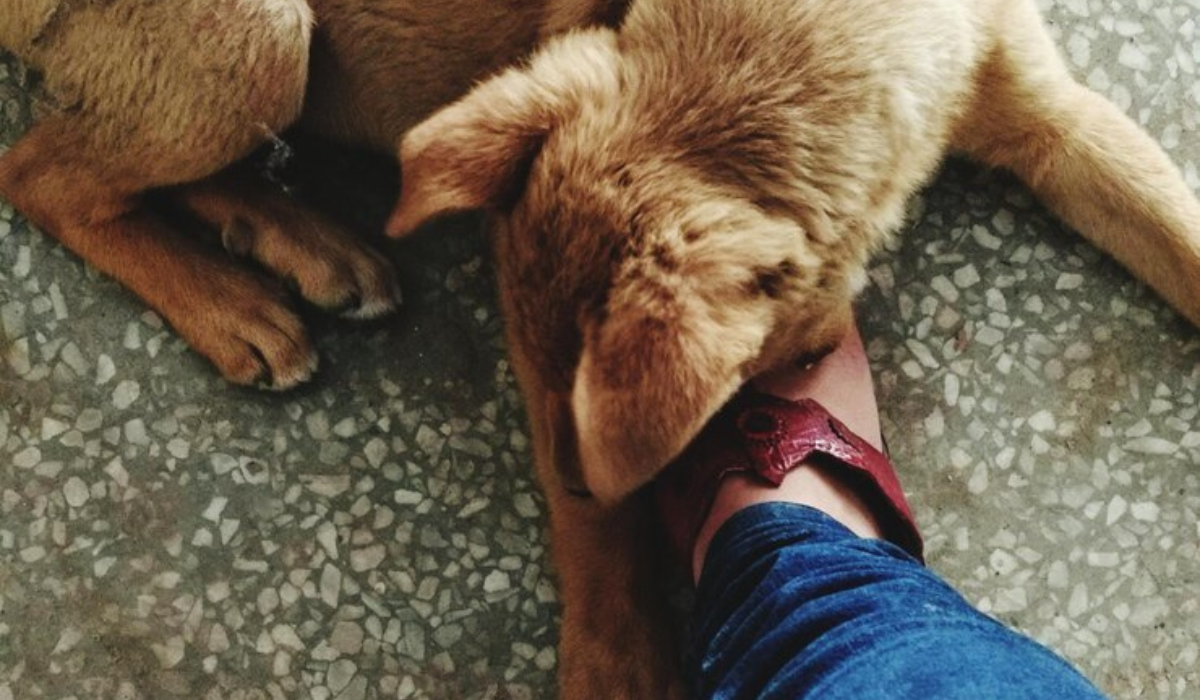It can be alarming to find black or pigmented lumps on the skin of your dog, but you should not jump to conclusions. This is especially true if it involves skin cancer. Consider these key factors:
Pigmented or black Lumps: What causes them?
1. Ticks:
- Arthropods which feed on blood.
- Checking regularly and removing the waste properly is important.
2. Scabs:
- Description: Dry crusts covering healing wounds.
- Examining: A clipping and a close inspection will reveal whether it is a scab.
3. Foreign Bodies:
- Description: Hair caught on objects
- For example, chewing gum or plant burrs.
4. Insect bites:
- Local inflammation caused by wasp, spider, or bee bites.
5. Punctures:
- Cause: Trauma or bites.
- Examining the abscess after clipping and cleaning reveals that it is possible.
6. Abscesses:
- Localized pockets or infections
- Identification: Cleaning and clipping aid identification.
7. Warts:
- Description: Benign lumps, may appear dark if infected.
- Treatment: Surgical removal in specific cases.
8. Histiocytomas:
- Description: Small raised lumps on young dogs.
- Nature: Benign, and usually resolves spontaneously.
9. Blisters:
- Description: Fluid-filled blobs caused by friction or damage.
- Color variation: The skin may appear pigmented when blood is present.
10. Cysts:
- Description: Sebaceous Cysts with Secretions
- Nature: Generally benign. Surgical removal is required if necessary.
11. Hematoma:
- Description: Traumatic bruises ranging in color from blue to black.
- In some cases, bleeding disorders are associated with this condition.
12. Mast Cell Tumors:
- Description: Common skin tumours that account for 20% of all cases.
- Early diagnosis and treatment is required.
13. Malignant Melanomas:
- Description: Skin cancer affecting melanocytes.
- Early diagnosis is crucial to proper treatment.
How to Determine the Cause of Black Lump
Professional Veterinary Exam:
- Examine the entire health of your dog.
- Examining the lump in detail, taking into consideration its various characteristics.
- Shaving the hair around a lump is a good way to evaluate it.
- Recommendations on further evaluation methods such as fine-needle aspiration, biopsy or lumpectomy.
Treatment for Black Lumps in Dogs
Abscesses, Ticks and Infections
- Drain, remove, or treat with antibiotics depending on the cause.
Skin cancer (melanoma) and Mast Cell Tumors:
- Radiation therapy and/or immunotherapy may be used in conjunction with surgical removal.
- Early diagnosis is crucial for effective treatment.
Overview of Guidance
Regular Veterinary Checkups
- It is essential to identify and treat lumps as soon as possible.
- Assures your dog’s overall health and wellbeing.
Informed Decision-Making:
- Understanding the causes of pet behavior helps pet owners make informed decisions.
- Skin cancer is not a simple diagnosis. Do not jump to conclusions.
Pet parents who keep these points in mind can better manage the situation when they discover pigmented lumps under their dog’s fur. They will be able to provide the best care possible for their furry friends. Regular veterinary care and proactive measures are important for maintaining the health and happiness of a dog.
Initial Concerns
Melissa, I can understand your concern about the sudden appearance of a dark tumor on the foot of your 13-year old corgi-mix. Senior dogs can experience changes as they age and may sleep more. However, a sudden lump should be taken seriously.
Diagnosing the Lump
Fine Needle Aspiration
- A procedure called fine-needle aspiration can be used to definitively diagnose a lump.
- Inserting a needle into the lump is the first step. Cells and other contents are then removed for microscopic analysis.
Melanoma
Melanoma Overview:
- It’s possible that the appearance of the tumor could indicate melanoma.
- Melanomas can be aggressive cancers that often appear on the lips, feet or mouth.
Treatment Approach
- The primary treatment is to remove the melanoma as well as as much of the surrounding tissue as possible.
- Senior dogs have a higher risk of anesthesia, but a complete blood test can help identify any underlying issues.
Anesthesia: Risks and precautions
Senior Dogs: Considerations
- Senior dogs are at higher risk of anesthesia complications, but with the right precautions and thorough blood testing, these risks can be reduced.
- Dogs with additional health problems may require mild sedatives and local anesthesia.
Survival Outlook and Additional Treatment
Average Survival Time
- The average time for dogs with paw melanoma to survive after surgery is around a year.
- The metastatic nature of melanoma can require the removal of lymph nodes in the region and possible chemotherapy.
Immunotherapy and herbal Therapies
- Although promising, immunotherapy may not be widely accessible.
- Herbal alternatives can be investigated, but surgery is still the most important step.
Urgency in Veterinary Appointments
Prompt Veterinary Consultation
- Urgency is essential. Make an appointment to see your veterinarian for a diagnosis and examination of the lump.
- Early detection and treatment improves your dog’s odds.
The conclusion of the article is:
It is important to act quickly and seek veterinary advice. Early intervention is the most effective way to treat your dog, even if there are concerns. Your veterinarian will guide you through the diagnosis process, provide treatment options and care for your dog.








